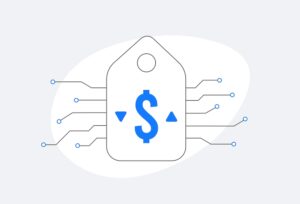 Intelligently managing the explosion of customer data is critical for marketers to be successful. The challenge has become not just about addressing the volume of data, but figuring out who is creating this information and how best to use it.
Intelligently managing the explosion of customer data is critical for marketers to be successful. The challenge has become not just about addressing the volume of data, but figuring out who is creating this information and how best to use it.
A recent report by CSC found that 70% of data is created by individuals—not enterprises—but it is the enterprises that are responsible for managing the lion’s share of it. This first party or proprietary data, which comes directly from user interaction, is a valuable data asset for today’s marketer. Such data tends to be richer, more accurate, and offers tangible value. It provides better insight into a individual affinity, behavior and preference for any specific category. There’s just one small problem—proprietary data is often created by users who are anonymous.
As many as 410 million people globally are using software to browse the Internet in anonymity intentionally, according to a report from Global Web Index. Nearly 170,000 VPN users across 32 countries were surveyed and nearly a third (28%) said they do so to gain access to news and social networking sites and to remain anonymous. Private browsers, VPNs and proxy servers help mask a user’s true location by routing their access through another country. This technology helps them remain nameless and work around restrictions to sites like Facebook, or view US-only TV shows on Netflix and Hulu.
Some users are also good at clearing out their cookies and disabling tracking on their devices, which is easier to do on mobile devices than on traditional laptops and PCs. Finally, many sites do not ask for identification or authentication information prior to making their content available so as to not discourage visitors and negatively impact traffic. In our experience, many content heavy sites can definitively identify less than 10% of their unique visitors.
This presents a significant dilemma for digital media companies and publishers. They have little knowledge of who is reading the content and therefore cannot offer any personalization, ultimately leaving money on the table. Aside from a lack of personalization, anonymous users also skew the data on conversion rates such as subscriptions and email signups. And forget about optimizing sites based on analytics; dashboards are meaningless if they have to rely on imperfect data. Let me illustrate the situation through the example of three somewhat similar publications.
I am a digital subscriber to The New York Times. Despite being a subscriber, when I log on to the site, I find that I am often browsing anonymously and don’t even realize it because the site does not prompt me to log in, unless I am trying to share an article or am exceeding a certain number of articles during a session. The Wall Street Journal, on the other hand, does not let me read anything unless I log in and have a paid subscription, even if I have been redirected to their site. The Financial Times takes the middle road, in which I do have to log in, but they provide access to a few free articles a month. Of these media companies, The New York Times probably has the least knowledge about me and my reading preferences and habits, despite the fact that I spend a great deal more time on their site than I do on the other two. As a result, they monetize their audience much less effectively than do the other two publications, leaving a great deal of money on the table while also doing a disservice to their advertisers, who deserve to understand in greater detail who is seeing their ads and what value they are getting for their spend.
So how can marketers get precise and targeted user data, especially for digital advertisers, if the audience is working just as hard to stay in the shadows? Surprisingly the answer lies in deploying tried and true marketing tactics and capitalizing on what consumers really want—more personalization. The fact is that encouraging registration and logins still works. And anonymous users won’t stay that way for long if they see how creating a profile can benefit them – more deals, more services, more value that is relevant to them as an individual and if staying anonymous is more difficult.
Proprietary, first party data is rapidly becoming the golden ticket for marketers and publishers. Turning the tables on anonymous users and converting them into registered users will enable digital media brands to correctly interpret an individual’s page view data and glean insight from which devices are used to access their content and when. The challenge is to do so without negatively impacting traffic to the extent that overall advertising revenue is negatively impacted.
Success in doing so is truly intelligent use of data, resulting in an improved customer experience, as well as more value generated through native advertising and programmatic buying, driving improvements to the bottom line.
Naras Eechambadi is president and CEO of Quaero.


 Network
Network

